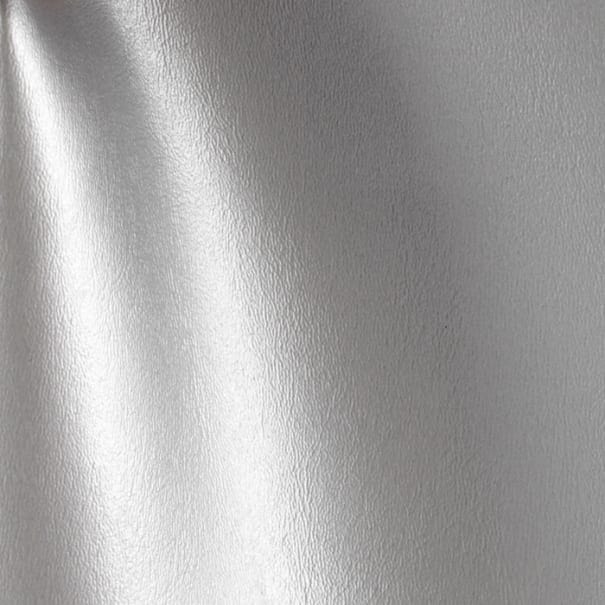
When we think of tile, images of colored bathroom tile and creative kitchen backsplashes spring to mind. But have you ever considered wall tiles? What is an often overlooked home and commercial decor accent, wall tiles can give your space an exciting and unique style with various styles, colors, and shapes.
With our expansive selection and an unending range of wall tile ideas, Oasis is the destination for any design project you want to undertake.
So before you start removing your kitchen backsplash or researching tips for purchasing your kitchen tiles, read our wall tile buying guide for 2025 and learn about the wonderful world of wall tiles.
Where Can Wall Tile Be Applied?
At Oasis, customers often ask, “Where can I use wall tiles?” We usually answer, “Where can’t you use wall tiles?” The most common applications for wall tiles include the following.
Kitchen Backsplashes
Whether researching the perfect backsplash for white kitchen cabinets or looking through our backsplash tile buying guide, you’ll quickly learn that you can’t go wrong with installing wall tiles on your kitchen backsplash.
Simply put, installing a kitchen backsplash tile protects the area’s walls from splashes, stains, and heat, all while adding a decorative element. The best materials include kitchen glass wall tiles, such as our Victorian Iconic Classic Albert Grey Glossy Tile, ceramic, and porcelain, like our Decko Neo Wright Blue Elongated Hexagon Tile.

Bathroom Walls
Bathroom wall tiles are often used in shower enclosures, around bathtubs, behind sink vanities, and as accent walls. Wall tiles for bathrooms must be water-resistant, easy to clean, and similar to all bathroom tiles, they must be mold and mildew-resistant.
Some of the bathroom wall tile trends in 2025 include blue glass wall tiles like our Wave Aqua Glossy Glass Tile. Another timeless bathroom trend incorporates white subway tile like our Evermore London White Porcelain Tile.


Accent or Feature Walls
Whether it’s a bedroom, living room, or entryway, creating a focal point using wall tile can transform a space, drawing attention and adding tremendous value and interest to the area. Incorporating our Ocean Water Waves Blue Glossy Glass Wall Tiles into your commercial spa will entice guests to come in and relax.

Fireplace Surrounds
The front-facing portion of a fireplace is called the surround, the most visible part. Tile is a non-flammable material that can withstand high temperatures without harming your home. It can also be an excellent fire barrier, reducing the risk of accidental fires or fire damage.
Whether you plan to use wall tiles like our Emporio Calacatta White Porcelain Tile to cover the surround or use them right up to the ceiling of your living room, incorporating tile gives the fireplace visual weight and makes a statement.

Why Tile a Wall?
Incorporating wall tiles offers several aesthetic and functional benefits, including the following.
Durability and Longevity
From ceramic wall tiles to porcelain, tiles are highly durable. They can withstand long-term wear and tear, making them ideal for high-traffic areas such as commercial bathrooms or environments exposed to heat, like a kitchen or fireplace.
Water Resistance
Water-resistant tiles, like porcelain tiles, are perfect for areas regularly exposed to moisture, such as bathrooms, kitchens, and laundry rooms. For example, shower wall tiles such as our Natura Raincloud Matte Porcelain Tile would prevent water damage to walls and are easy to clean.

Increase Property Value
Whether installing ceramic floor tiles in your kitchen or contemplating modern kitchen tile ideas, adding tile to your home can enhance its aesthetic and functional appeal and potentially increase its market value. Well-installed, high-quality tiles like our Evermore Forest Green Glossy Porcelain Tile are considered a premium finish that adds a touch of luxury to the space.

Aesthetic Appeal
Wall tiles come in a vast array of colors, textures, patterns, and shapes, allowing for various creative designs that enhance the overall look of any room. Whether creating the perfect kitchen for entertaining or looking for tips on designing the ideal backsplash, adding wall tiles will enhance your space and make it more inviting.
What to Consider When Selecting Wall Tiles?
From cost and availability to ease of maintenance, size, and aesthetic appeal, there are dozens of factors to consider when selecting wall tiles. The following are a few of the most common factors we encounter at Oasis.
1. What Are The Best Tiles for Wall Design?
The best tiles for wall design depend on the desired look, functionality, and the specific application area.
Ceramic tiles are most suitable for wall applications in kitchens, living rooms, and bathrooms. They’re affordable, versatile, and available in many styles and patterns, like our Hanoi Celadon Green Glossy Tile.

Porcelain tiles are best suited for high-traffic areas such as bathrooms, exterior walls, and commercial spaces. Similar to the debate surrounding ceramic vs. porcelain floor tiles, it also exists with wall tiles. The latter is more durable and less porous than ceramic, making them ideal for wet or outdoor applications.
2. Should Tiles Be Lighter or Darker Than Walls?
Choosing tile colors relative to wall colors depends on the size of your space, the aesthetic, lighting, and the room’s use.
Lighter Tiles
Selecting a lighter tile color than your walls will reflect more light, making your room feel brighter and bigger. Installing our Aquaterra White Brick Terrazzo and Shell-Polished Tile in a smaller room with limited natural light will enhance the space. This juxtaposition is best for small or enclosed spaces, rooms with limited natural light, areas where you want a calm and serene atmosphere, or to create a minimalist look.

Darker Tiles
Conversely, selecting a darker tile color than the walls can ground a space, adding depth and richness, particularly in larger rooms. Darker tiles, such as our Natural Nero Black and Gold Metal Herringbone Stone Tile, can draw the eye to their texture or pattern, making them the perfect choice for a feature wall. Darker tiles are best for large spaces or rooms with high ceilings, well-lit areas with ample natural light, or any space where you want to create a dramatic, contemporary, or luxurious feel.

3. What Color Wall Tiles Should I Choose?
When choosing a wall tile color, there are a number of different factors to consider.
Mood and Style
Your wall tile color choice can influence the mood and style of your home or business. For example, warm tones like our Phoenix Brick Taupe Glossy Porcelain Tile can create a cozy atmosphere, while cooler shades can create a sense of calmness.

Purpose of the Room
The purpose of the room will certainly help determine the right color choices. For example, a small kitchen might benefit from a bold kitchen sink backsplash using our Art Studio Kruger Lake Green Glass and Metal Tile, while you might select something for the walls that compliments your current bathroom floor tiles.

Size of the Room
Light-colored wall tiles are often recommended for smaller spaces, while darker tiles are frequently used in larger spaces.
4. What Size Wall Tiles Should I Choose?
The best tile size depends on the room size, its function, and your design preference. In general, larger tiles make the space feel bigger and cleaner. By comparison, smaller tiles can be used for intricate designs or curved surfaces. For modern styles, larger tiles, such as our Statuario Imperial White Polished Porcelain Tile, are a great choice. Whereas for more traditional looks, smaller tiles work best.

5. How Thick Should Wall Tiles Be?
The thickness of your wall tile should be based on the wall’s available structural support and how you plan to use them. Traditionally, wall tiles are 6-10mm (0.24-0.4) thick, typical for standard wall installations. They are durable and yet lightweight enough for vertical surfaces.
6. How Do I Determine How Many Wall Tiles I Need?
Follow these steps to determine how many wall tiles you need:
- Measure the height and width of the wall or area in feet or meters and multiply to get the total square footage or meters.
- Check the size of the tile and calculate how much area one tile covers. Divide the total wall area by the area covered by one tile.
- Add approximately 10-15% extra tile for breakage, cutting, and future repairs.
- Depending on the type of grout lines you’re using, you may need to subtract their width from the total tile coverage.
The answer from executing these steps will give you the total number of tiles you need for your project.
7. How Should The Wall Tiles Be Arranged?
Wall tiles can be arranged in several different patterns depending on the look you want:
- Grid (Straight Lay): Tiles are arranged in a straight column and row, thereby creating a clean, modern look.
- Offset (Brick/Running Bond): Tiles are offset like bricks, creating a classic, timeless design.
- Herringbone Pattern: Using our Himalayan Arches Nepal Brown Heights Glossy Tiles as an example, arrange these rectangle tiles in a zigzag pattern to create a lively and creative display.
- Stacked Vertical: In this pattern, tiles are stacked vertically to give the illusion of height. Your eye naturally follows the length of the tiles, giving the wall a smooth and modern appearance.
- Diagonal (Diamond): This layout lays square tiles, such as our Arctic White Small Porcelain Tile, at a 45-degree angle to the wall. It’s a fantastic way to make your wall space look bigger while adding a visual element.
There are many more wall tile patterns to choose from. Most important is that you make the selection based on your preference, room style, and tile shape
8. When Tiling a Wall, Where Do I Start?
- When tiling a wall, the golden rule of thumb is to always begin in the center and work your way out from there. This approach will ensure your pattern remains symmetrical.
- Make sure to tile a row entirely before moving on to the next.
- Incorporate a tile gauge and a piece of wood indicating the length of your tiles. It’s designed to help you mark out your tile roots.
- Don’t forget the tile spacers; these small pieces of plastic should be placed between each tile to keep the spacing while the adhesive dries.
9. How Do I Maintain and Care for My Wall Tiles?
The following is recommended to ensure the longevity and durability of your wall tiles:
- Regular Cleaning: To prevent dust and dirt from building up on your wall tiles, use a cloth or sponge with a small amount of dish soap and wipe them consistently.
- Steer Clear of Chemical Cleaners: Use non-abrasive cleaning products to avoid damaging your tile’s surface or grout.
- Apply Grout Sealer (if needed): To prevent moisture and stains from penetrating the spaces between your tiles, apply a grout sealer periodically.
- Inspect for Damage: Check your wall tiles regularly for any loose tiles or cracks and repair them swiftly to prevent further damage.
- Ensure Wet Areas Are Ventilated: To reduce mold and mildew growth, ensure your kitchens and bathrooms have proper ventilation.
Shop Wall Tiles with Oasis
If you weren’t familiar with wall tiles before you began reading our guide, you will undoubtedly be now! At Oasis, wall tile trends have never ceased to amaze us thanks to their versatility and the impactful way they can enhance any space. Whether you’re looking at creating a feature wall or are looking for a kitchen backsplash to compliment your marble floors, we can help.
So, are you ready to transform your walls? Start ordering your wall tile samples today and turn your design vision into reality.


























